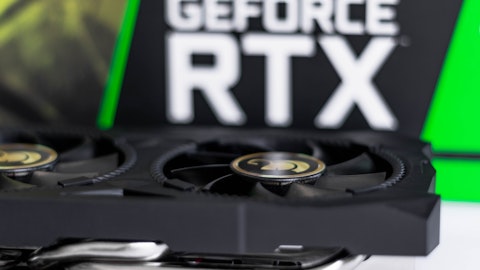Lester Wong: So for Q1 actually, as I indicated in my remarks on gross margin. Actually, the majority of the ball bonders were actually purchased by IDMs rather than OSATs, which is unusual and has not happened for many, many quarters. And so, as far as, sorry, what was the second question?
Craig Ellis: It was color by OEM versus OSAT and then color by…
Lester Wong: Yes, that was the OEM, OSAT. Yes, and then end markets, automotive end market actually improved significantly. It grew 41% quarter-by-quarter and as Fusen mentioned general semi fell significantly about 61% quarter-by-quarter and also memory to no one’s surprise, also fell significantly about 80%. So for the quarter, automotive comprised about 40% of our capital equipment, which is very, very high and general semi is about 50%.
Craig Ellis: And then lastly on the order line of inquiry Lester, what’s happened quarter-to-date. Are you seeing that same level of strength that gave you the 1.3 book-to-bill in the prior quarter continues, had accelerated or what’s going on, especially now that we’re on the other side of Lunar New Year?
Lester Wong: Well, I think we continue to see a lot of inbound inquiries, particularly from China, as you put it from after the Lunar New Year, it’s just obviously just a week after the Lunar New Year, we as Fusen indicated, we do anticipate a much stronger second half of FY ’23. So we do see orders continue to come in.
Craig Ellis: Yes. And that’s very helpful. So I want to move on to gross margins. So the company’s execution on gross margins have been really stellar over the last five quarters, I think they’re averaging 50%. So can we just take a different look at the guidance for the current quarter, which I think you said was, was 46%? Why would gross margins be 400 basis points lower than the trailing four to five quarter average? And then, you mentioned capacity, I take it you’re saying there is some incremental depreciation that’s coming in, but given the strength, you’ve had in gross margin why wouldn’t we see gross margins push above the 47% you mentioned as we move through the year.
Lester Wong: Well, I think as we move through the year, we’re still aiming for overall gross margin around 47% for the fiscal year. But obviously, Craig as you know, quarter-to-quarter it changes, I mean, Q1 the gross margin was a huge benefit in terms of both customer mix as well as product mix. I mentioned IDMs was more than a majority of our ball bonding customers in Q1. We don’t see that maybe continuing in terms of the customer mix. I think as you also, as you also mentioned we right now, we can continue to invest in some of our growth vectors products and particularly in advanced display and advanced packaging. So as Fusen mentioned in his remarks, we’re expanding our manufacturing capacity by quite a lot. So, in addition to depreciation.
I think also there’s also operating cost of those facilities and right now, those facilities, those products for those facilities will really start to ramp in the second half of €˜23 and €˜24 not so much right now. So, that, those operating cost goes into the own cogs, which also affects the gross margin overall.
Craig Ellis: That’s real helpful and then lastly from me before I get back in the queue. Really helpful to get all the order color. The question is, this is, as we go back to Fusen comments that not specific guidance, but seemingly comfort around an $840 million revenue level this year. How does the company currently see linearity in the back half of the year? Do you see growth being fairly equal as represented by current consensus at around 30% per quarter or would the growth and the revenue levels be more either front-end or back-end loaded. Any color helpful there guys. Thank you very much.





